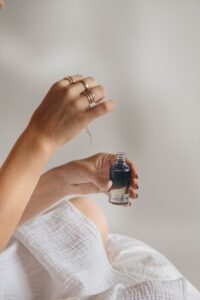Polyglutamic acid (PGA) has created quite the buzz recently, with some claiming that it is the new hyaluronic acid. But what really makes it so unique?
Apparently, PGA can get you that glowing, healthy look in a matter of seconds, and it can help those dealing with dehydrated skin.
Curious to find out more?
The Buzzy Ingredient Your Skin Care Routine Needs

PGA is a naturally derived ingredient from Natto, a famous Japanese food made from fermented soybeans that act as a humectant, holding moisture five times more than hyaluronic acid. That’s up to 5,000 times more than its molecular weight.
To recall, hyaluronic acid can hold moisture 1,000 times its weight.
Peptide powers
PGA is also a peptide, meaning it can inhibit the enzyme that breaks down your skin’s naturally occurring hyaluronic as you age. It’s also made up only of large molecules, so it creates a thin film on your skin’s surface. How cool is that?
That layer supports the skin’s natural moisturizing process and prevents water. As a result, the fine lines are getting plumped, and the grey winter complexions brightened.
What Specialists Recommend?
Before you get rid of your beloved hyaluronic acid and add PGA to your skin care routine, you should know some things.
Dermatologist Dr Sam Bunting recommends using both formulas in your skin care routine. She explains:
“[…] the two ingredients can be combined easily for synergistic results, as hyaluronic acid penetrates the lower levels of the skin whereas PGA seals moisture in.”
Dr Bunting also said that PGA doesn’t replace alpha-hydroxy acids or retinoids. It should be just a fantastic addition to your hydration routine.
How to apply PGA

First, cleanse, then apply (or not, your choice) hyaluronic acid first to hydrate enough and buffer antioxidants like vitamin C or exfoliants, such as glycolic acid, and let them sink nicely and deeper into your skin.
Next is PGA’s turn, as it lays on the skin’s surface and locks in the lighter and thinner ingredients underneath. Finally, apply an SPF if you’re following a morning skin care routine, and you’re ready to go!













Leave a Reply